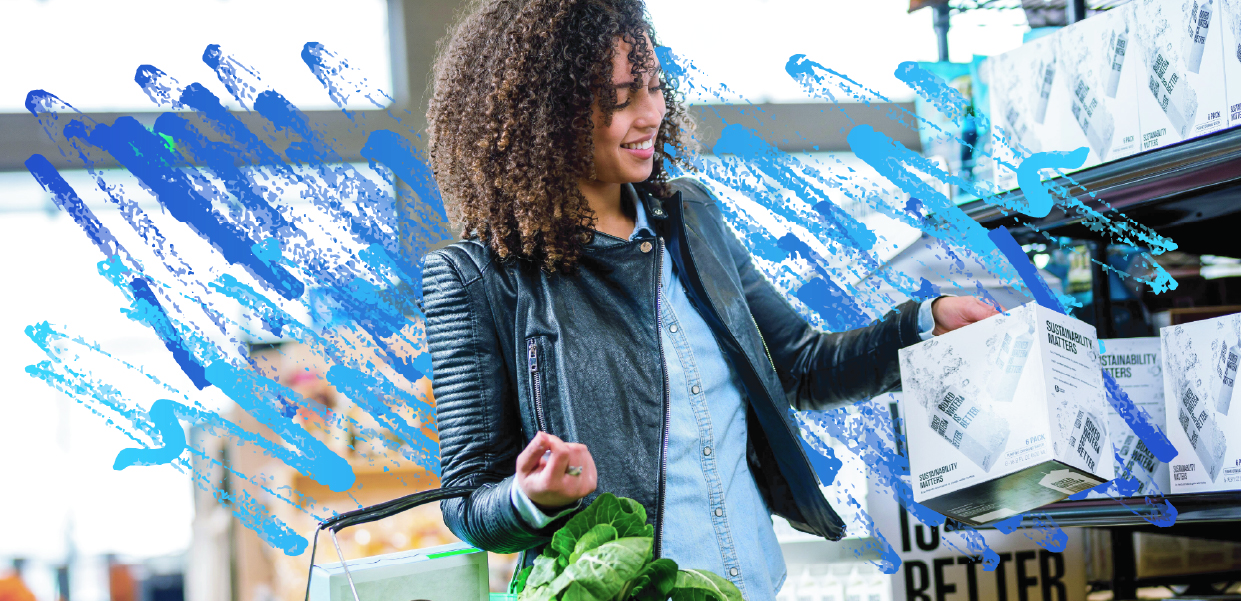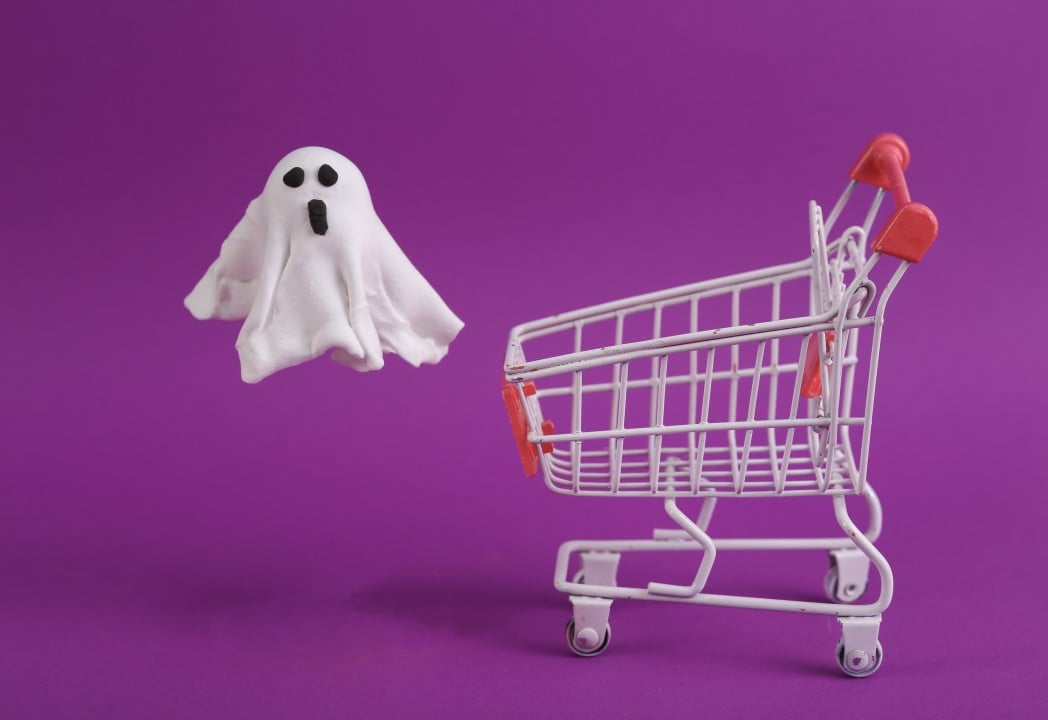The Shelf Renaissance: Why Brands are Returning to Stores

 In March of 2021, Nike made a decision that raised eyebrows across the retail industry: the apparel and footwear giant announced its departure from the shelves of several retailers, including long-time partner Macy’s.
In March of 2021, Nike made a decision that raised eyebrows across the retail industry: the apparel and footwear giant announced its departure from the shelves of several retailers, including long-time partner Macy’s.
The decision came during the midst of the COVID-19 pandemic, when foot traffic in apparel stores was down 20% from 2019. At the time, it was unclear whether traditional retail would ever return to pre-pandemic levels. Instead of waiting and hoping for the tides to turn, Nike, like many other brands, directed its attention to direct-to-consumer (DTC) mediums.
But then, something unexpected happened.
By the end of 2021, growth rate for brick-and-mortar sales (18.5 percent YOY) exceeded that of e-commerce (14.2 percent YOY) for the first time ever. And in the third quarter of 2022, brick-and-mortar accounted for a considerable 85.9 percent of total retail sales.
Despite having the odds stacked against them, retailers not only held their ground during the pandemic but emerged from it stronger than ever. They implemented a multi-channel approach, met consumers in the middle by offering curbside pickup and delivery services, and positioned themselves to thrive in the new state of retail.
With all of this in mind, it should come as no surprise that Nike will be returning to Macy’s stores later this year, according to an announcement earlier this month by Macy’s CEO Jeff Gennette. And Nike isn’t the only brand making a return to shelves. Many brands that got their start as DTC-exclusive companies—including Allbirds, Sunday Citizen, Everlane, and Sweet Nothings—have all started to sell their products through established retailers.
What changed? Are brands returning to stores simply because the pandemic is over? Or are there more fundamental reasons at play? In order to answer these questions, we need to look at how DTC and traditional retail stack up against each other.
The Advantages of Selling through Retail Stores
DTC is appealing for a few reasons: you can cut out the middleman, which in theory allows for higher profit margins; and the barrier to entry is much lower than brick-and-mortar retail, which can be especially valuable for start-up brands who lack the capital and resources to meet large retailers’ expectations.
If a brand is able to capture and retain consumer attention exclusively through online marketing and advertising, then the upside of DTC is hard to ignore. But as more and more brands pour money into digital advertising mediums like social media and search engines—a movement that was accelerated by the pandemic—this condition has become increasingly more difficult and expensive to fulfill.
For example, many brands have found that the cost of acquiring and retaining customers online now undermines any advantages gained from the larger profit margins of DTC. With more companies vying for consumer attention than ever before, plus Apple’s recent privacy changes that have made it more difficult to reach consumers, the cost of customer acquisition has shot up significantly year-over-year across all digital mediums:
- Google’s programmatic display ad CPM (cost per thousand views/impressions) has increased 75%
- Google’s search ad cost per click (CPC) has increased 14%
- Facebook’s ad CPM has increased 61%
- Instagram’s ad CPM has increased 23%
- And last but certainly not least, TikTok’s ad CPM has increased 185%
The staggering rise in online advertising costs is reason enough for brands to return to retail stores, but there are other reasons at play too.
Shipping and warehousing costs are also reliably more expensive for online companies. Less consistent ordering patterns, lower order quantities, return management, and higher compliance penalties are just a few of the main cost drivers for DTC retail. Due to these reasons, according to McKinsey & Company analysts, channel profitability is still highest in brick-and-mortar stores.
However, by leveraging the existing logistical infrastructure of established retailers, brands can significantly lower their shipping and warehousing costs, thereby paving the way for consistently better profit margins.
Another advantage of brick-and-mortar for brands is tangibility. Sunday Citizen, one of the brands we mentioned earlier who has since moved away from a DTC-only approach, understands this advantage well.
Known for the softness of their blankets and bedding, Sunday Citizen realized the importance of having a presence in retail stores. Shoppers can’t feel the softness of a blanket online. When deciding between brands, they must make a judgement call that is essentially based on how good a company’s marketing is.
If you’re a brand that differentiates itself by tangible qualities such as feel, fit, scent, build quality, etc., then some degree of a brick-and-mortar presence is necessary. Sunday Citizen knows this. Allbirds too. Even Nike, who has the resources and brand awareness to pull of a pure DTC model if they choose to do so, also realizes the advantages of having their products in front of store shoppers.
One of the most convincing reasons for partnering with a retailer is the built-in scarcity that they can provide your brand. Whether shopping through a retailer’s online store or brick-and-mortar store, customers only have a small selection of products to choose from in every given category.
In terms of probability, retail stores give your brand a much higher chance of conversion (and at a much lower cost) than online mediums that provide shoppers with endless brands to choose from. They also give brands a steady stream of new and returning shoppers that greatly aids with new customer acquisition and existing customer retention.
 The Key to Succeeding in Retail Stores
The Key to Succeeding in Retail Stores
Despite all the advantages that we discussed, success in retail stores is not guaranteed. Just as brands are vying for the top spots on Google searches, they’re also vying for the limited amount of room on store shelves.
If you want your brand to thrive in retail stores, you must be prepared to fulfill retailer expectations. Namely, that means equipping your teams with technology that aids with retail execution and monitoring.
If you aren’t able to efficiently and effectively merchandise and replenish your products in stores—whether internally or through a partnership with a merchandising service organization (MSO) or distributor—it will be impossible to maintain a healthy and profitable relationship with retailers.
Furthermore, some retailers give brands limited visibility into important metrics like purchase behavior (although this trend is shifting), which can make it hard for brands to measure store-by-store performance and stay ahead of changing consumer preferences.
Retail execution and monitoring software can help alleviate this reduced visibility by equipping your field teams with an efficient means of on-shelf data capturing that supports real-time on-shelf availability tracking and reporting capabilities.
If you’re product is optimized for store shelves, and your team has the tools they need to execute work across your retail footprint, then a partnership with retailers can provide you with significant upside compared to a pure DTC approach.
Conclusion
E-commerce and brick-and-mortar is no longer an either/or issue. They are two sides of the same retail coin, and it is up to each brand to decide the right balance for their product(s). But if we’ve learned anything from the current shelf renaissance, it’s that, sooner or later, brands do need to strike some sort of balance between physical and digital retail.
We now live in a multi-channel retail environment. The brands that diversify their presence across online and in-store mediums are the ones best positioned for sustainable growth. And the brands that execute well in stores are the ones best positioned for profitability.




